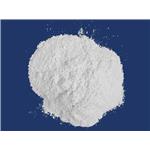Vitamin B6 (vitB6), or pyridoxine, is an important compound for general cellular metabolism. Since its discovery in 1934 by Gy?rgy and colleagues, it has been implicated as a co-factor in more than 140 biochemical reactions in the cell. Although most vitB6 co-catalyzed reactions are related to amino acid biosynthesis and catabolism, vitB6 also contributes to fatty acid biosynthesis, breakdown of certain storage compounds in animals and plants, as well as in the biosynthesis of plant hormones, neurotransmitters, and organelle-specific compounds such as chlorophyll. In addition, vitamin B6 can quench reactive oxygen species (ROS). Because of its role in ROS scavenging and chlorophyll synthesis, vitamin B6 benefits photosynthesis and is discussed as a possible factor in alleviating abiotic and biotic stress. Vitamin B6 (pyridoxal 5′-phosphate) participates in the process of synthesizing dopamine, epinephrine, norepinephrine, serotonin and GABA. It has also been found to be an antioxidant.
Chemically stable, more so in acidic solutions. It will lose its activity if exposed to light or oxidizing agents under neutral and alkaline conditions.
Solubility: soluble in water and ethanol, insoluble in organic solvents such as ether.
Form: colorless crystal.
Figure 2 shows the chemical structural formula of vitamin B6 and its derivatives.
VITAMIN B6 (Pyridoxine). Infrequently called adermine or pyridoxol, this vitamin participates in protein, carbohydrate, and lipid metabolism.
Vitamin B6, an essential nutrient, comprises a group of chemically similar compounds, of which the active form is pyridoxal 5′-phosphate. Its food sources include meat and vegetables (e.g., bananas, chickpeas, potatoes, and nuts). Grain milling, heating, storage, and canning reduce the vitamin B6 content of foods, although less so for vegetable sources; pyridoxine is more stable for their compound. Adverse effects have been documented from vitamin B6 supplements but never from food sources. The richest sources of vitamin B6 include fish, beef liver and other organ meats, potatoes and other starchy vegetables, and fruit (other than citrus). In the United States, adults obtain most of their dietary vitamin B6 from fortified cereals, beef, poultry, starchy vegetables, and some noncitrus fruits.



